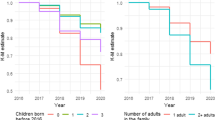Abstract.
Public employment growth has been parallelled by increased female labour force participation, while real wages for typical female public sector occupations have not increased. In a theoretical model we, first, show that there is a tradeoff between day care provision and gross wages for occupations for which day care is a complement. It is possible to combine increased public labour demand with public day care provision leaving the wage unaffected. Second, non-parents will be in favour of increasing day care as long as day care productivity is higher than the inverse of the tax rate. This is because the effective labour supply and, therefore, the tax base increase. Third, parents want to push day care provision even further. They are prepared to accept a lower day care productivity than non-parents because day care provision relaxes the constraint on their desired labour supply. The Pareto efficient day care provision is between parents‘ and non-parents‘ preferred levels.
Similar content being viewed by others
Author information
Authors and Affiliations
Additional information
Received: 12 December 1995 / Accepted: 17 September 1997
Rights and permissions
About this article
Cite this article
Lundholm, M., Ohlsson, H. Wages, taxes and publicly provided day care. J Popul Econ 11, 185–204 (1998). https://doi.org/10.1007/s001480050064
Issue Date:
DOI: https://doi.org/10.1007/s001480050064




